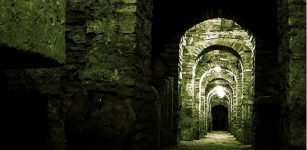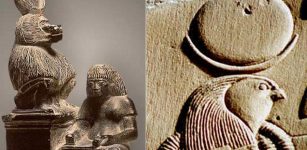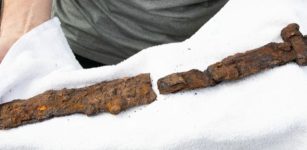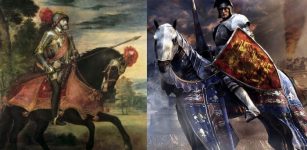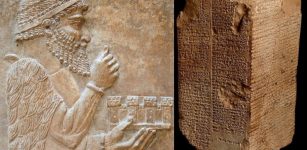Only Known Roman ‘Lorica Squamata’ Legion Armor Restored
Jan Bartek - AncientPages.com - The recent reassembly of the only known surviving Roman lorica squamata armor marks a significant milestone in archaeological research. This exceptional find, unearthed during a 2020 excavation in the ancient town of Satala, northeastern Turkey, dates back to the Late Roman period, specifically the 5th century A.D. The armor's remarkably intact condition provides researchers with an unprecedented opportunity to study this type of Roman military equipment.
Left: Relief on the Arch of Constantine depicting soldiers wearing the lorica squamata. Credit: Public Domain - Right: Unique 1,500-year-old Roman 'Lorica Squamata' legion armor, the only known example in the world. Credit: Türkiye's Ministry of Culture and Tourism
Lorica Squamata, also known as "scale armor," was a type of protective gear widely used in the Roman military. Higher-ranking soldiers, including officers, standard bearers (signifiers), musicians, and certain cavalry units, primarily wore this armor.
Unlike the more commonly recognized Lorica Segmentata, which consisted of large, rigid plates, Lorica Squamata was constructed using numerous small, overlapping metal scales. These scales were typically made from bronze or iron and were sewn onto a fabric or leather backing. Each scale had small holes punched into it, allowing for attachment to the backing material in overlapping rows using wire or stitching.
This is what the armor looked like before it was assembled. Credit: Türkiye's Ministry of Culture and Tourism
The design of Lorica Squamata offered a unique combination of flexibility and protection. This construction method allowed for greater freedom of movement compared to rigid plate armor while still providing significant defensive capabilities. The armor's adaptability made it suitable for various roles within the Roman military, particularly in dynamic combat situations where mobility was crucial.
However, Lorica Squamata had its drawbacks. Due to its scale construction, the armor required careful maintenance to prevent rust and damage. Additionally, the numerous scales made it relatively heavy compared to other armor types. Despite these challenges, one notable advantage was the ability to replace individual damaged scales without discarding the entire armor, contributing to its practicality and longevity in military use.
In summary, Lorica Squamata represented an important development in Roman military equipment. It balanced protection and flexibility for specific army roles. Its unique design and construction method showcase the ingenuity of ancient Roman armor craftsmanship.
The Turkish Ministry of Culture and Tourism has emphasized the global significance of this discovery, noting it as the first known example of its kind worldwide. The armor underwent extensive examination using advanced technologies to ensure proper preservation and study. X-ray analysis revealed the armor's near-intact state, providing crucial information about its structure and condition.
The Roman armor after restoration. Credit: Türkiye's Ministry of Culture and Tourism
As reported by Daily Sabah, the restoration process employed cutting-edge techniques, including micro-CT imaging. This advanced imaging method was applied to three edge plates of the armor, allowing researchers to determine precise measurements and analyze the metallurgical properties of the materials used in its construction. This detailed examination offers invaluable insights into Roman armorers' manufacturing techniques and materials.
According to the ministry, "such armor rarely survives to the present day. The detailed X-ray results indicated that the armor was almost entirely intact. Through rigorous efforts over three years at the Erzurum Restoration and Conservation Laboratory, each plate of the armor was carefully cataloged, conserved and restored to its original form. The armor was reassembled on a mannequin to reflect its original appearance, standing once more in its full glory."
See also: More Archaeology News
This discovery and subsequent restoration enhance our understanding of Roman military equipment and provide a tangible link to the ancient world, offering researchers and historians a unique opportunity to study and preserve an important piece of military history.
Written by Jan Bartek - AncientPages.com Staff Writer





